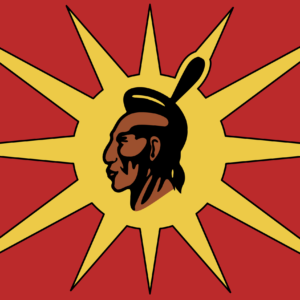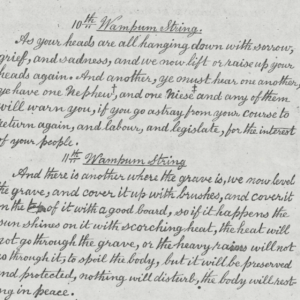
If the term “settler” makes you uncomfortable, being referred to as “the natives” is likewise.
During production day I am seated at the back of the room with my desk against the wall. I have a photo frame, a decorative coffee mug and an old calendar for 2017 placed neatly on the rim. There are two stacks of papers on either side of me and my drawer is full of books and resources. All of our writers and editorial team are seated in this room, including our head editor.
On a fine but overcast Tuesday, an old settler man with white hair came to visit my editor with his granddaughter.
Usually, when an older settler comes in to our place of work it is because they want something — which he did.
As I listened at the back of the room, the jist of what he wanted was some way to reach “the natives” and make them not want to destroy or defile an intended painting of Sir Frederick Haldimand. In other words, he wanted our paper to let “the natives” know that if they had any issues with a painting of Sir Haldimand that they could let him know ahead of time as to avoid any protest.
It’s a queer thing, you know.
To listen to someone speak about your people in the same way that a scientist would speak about a group of test subjects was as irritating as you might expect. It put into perspective that settlers from a previous generation grew up in an era where political correctness wasn’t the norm.
Thus, although he didn’t say it aloud, his insinuation was that because my editor was wearing a suit and seemingly agreeable, my editor wasn’t one of “those natives.” Unbeknownst to him, my editor was a protester at Kanohstaton.
In other words again, this settler came into my place of work without even knowing anything about our paper or the people and hands behind it. He said that he seen our paper once before and thought it was small, but that he thought he could use it to get his message out to the people of Six Nations and the Mississaugas.
Now as a reporter and editor, I do not find what he brought forth to be news, but rather a call for a way to manipulate readers into respecting the idea of a painting of yet another settler history icon.
Soon, this man brought up the fact that as a history buff he had found that Indigenous children are more likely to be educated in the history of Canada, while non-Indigenous children are not. Thus, he hopes that a painting of Sir Haldimand will help educate.
As ignorant as he was, he was not ignorant to the education of our children — I’ll give him that. But he was ignorant as to why Indigenous kids today are educated about history.
If you ever come across a person that wants to know about you and your people as an Indigenous person, you’re expected to know. However, if you ask a person of European descent the same types of questions, the majority draw blanks on their own history. So of course Indigenous children focus on being educated in those ways, as do their teachers if they are taught on reserve: a part of it is to ensure that they know about themselves for moments when their knowledge will defend them.
So I sat quietly and as they were finishing up their good byes I cleared my throat. The man jumped.
“Oh, there’s a lady here. I didn’t even see you!” he exclaimed. I forced a smile and replied that I was working.
I mean why yes, kind sir, women work these days. I daresay that you were not only unaware of your racism, but unaware of your surroundings and who, exactly, was listening to you.






